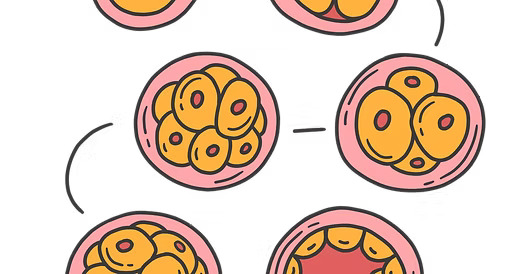
Blastocyst Culture
Blastocyst Culture: A Key Step in the IVF Journey
In an In Vitro Fertilization (IVF) cycle, the ultimate goal
is to achieve a successful pregnancy. Blastocyst culture is an advanced
laboratory technique that helps our embryologists select the embryo with the
highest potential for implantation, thereby increasing your chances of a
positive outcome.
Think of it as allowing nature to guide us. Instead of
transferring an embryo back to the uterus after just 2-3 days, we extend the
culture period in our state-of-the-art lab to Day 5 or 6, when the embryo
reaches a more advanced stage of development known as a blastocyst.
What is a Blastocyst?
A blastocyst is a complex, rapidly dividing embryo that has
developed into two distinct cell types and a central cavity filled with fluid:
- Inner
Cell Mass: This group of cells will eventually develop into the
fetus. - Trophectoderm
(TE): This outer layer of cells will become the placenta, which
is essential for nourishing the growing baby. - Blastocele: The
fluid-filled cavity that allows the embryo to expand.
Reaching the blastocyst stage is a critical milestone. It
indicates that the embryo has passed a key developmental checkpoint and
possesses the inherent quality needed to continue growing.
The Benefits of Choosing Blastocyst Culture
Culturing embryos to the blastocyst stage offers several
significant advantages:
- Better
Embryo Selection: Many embryos stop developing between Day 3 and
Day 5. By extending the culture, we can identify the strongest, most
viable embryos that have the energy to progress to this advanced stage.
This natural selection process gives us a clearer picture of which embryo
is most likely to lead to a pregnancy. - Higher
Implantation Rates: Because a blastocyst is more developed and
robust, it is more “in sync” with the uterine lining at the time
of transfer (Day 5), which can lead to a higher chance of implantation
compared to a Day-3 embryo transfer. - Enables
Preimplantation Genetic Testing (PGT): For patients opting for
PGT to screen for chromosomal abnormalities, a blastocyst culture is
essential. It allows our embryologists to safely biopsy a few cells from
the trophectoderm (which becomes the placenta) without affecting the inner
cell mass (which becomes the baby). - Supports
Single Embryo Transfer (eSET): The improved selection ability of
blastocyst culture gives us the confidence to transfer a single,
high-quality embryo. This significantly reduces the risk of twins or
higher-order multiples, leading to safer pregnancies and healthier
outcomes for both mother and baby(ies).
Is Blastocyst Culture Right for Everyone?
While blastocyst culture is a powerful tool, it may not be
suitable for every patient or cycle. The main consideration is that not all
fertilized eggs (embryos) will develop into blastocysts. In cases with a lower
number of embryos, our fertility specialists may recommend a Day-3 transfer to
avoid the risk of having no embryos reach the blastocyst stage for transfer.
Your physician will discuss your specific situation,
including your age, embryo quantity and quality, and previous IVF history, to
determine if blastocyst culture is the best strategy for you.
Our Laboratory Excellence
The success of blastocyst culture hinges entirely on the
quality of the laboratory environment. Our clinic is proud to feature a
cutting-edge IVF lab with:
- Advanced
Incubators: These create optimal, stable conditions that mimic
the natural environment of the fallopian tubes and uterus, providing the
perfect atmosphere for embryo development.
Your Journey, Our Expertise
Our team of expert embryologists and fertility specialists
are highly skilled in blastocyst culture. We are committed to using every
available tool to give you the best possible chance of success.
If you have questions about blastocyst culture and how it
might benefit your personalized treatment plan, please don’t hesitate to speak
with our doctor or contact our team. We are here to guide you every step of the
way.
